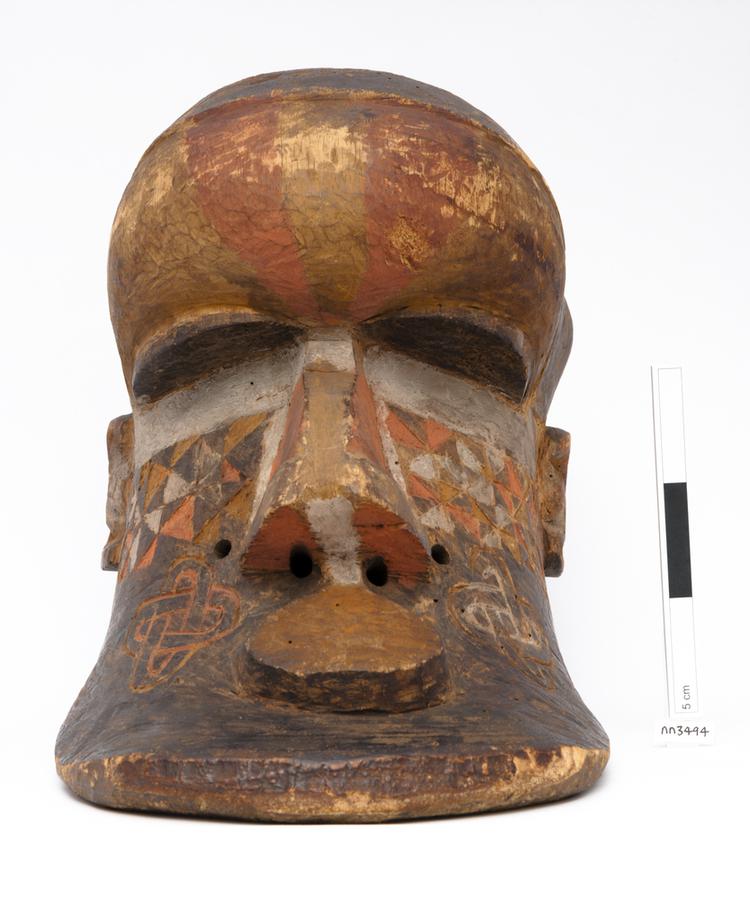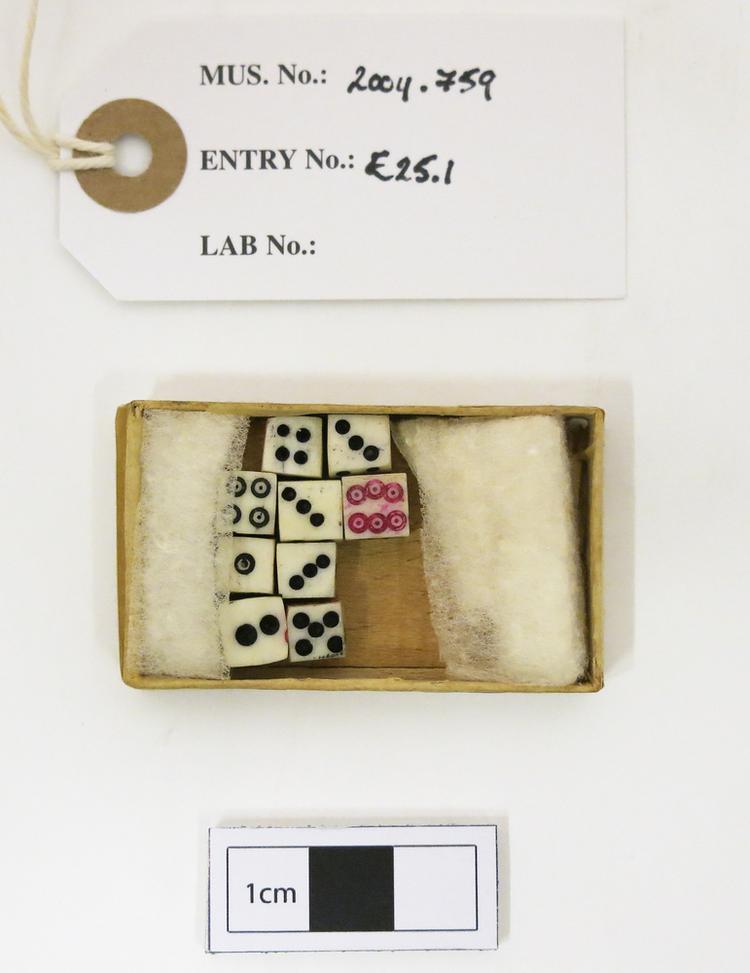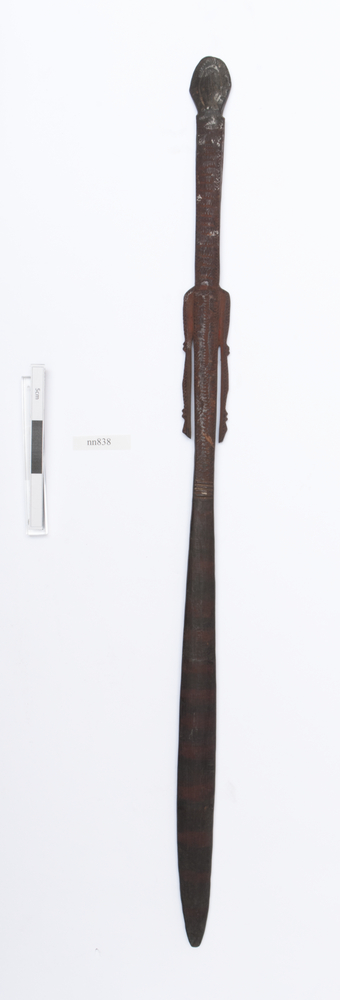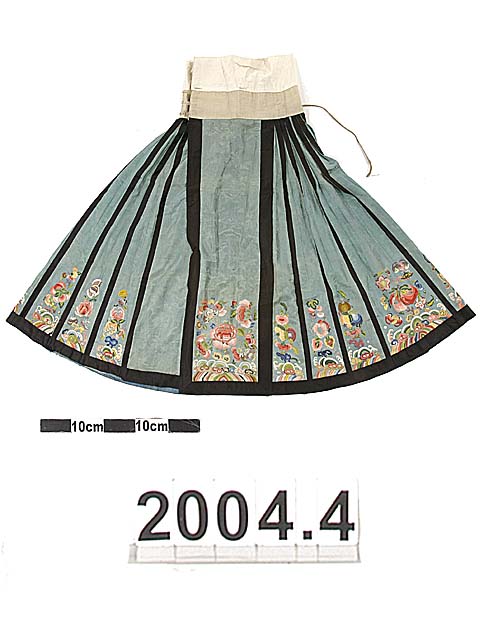
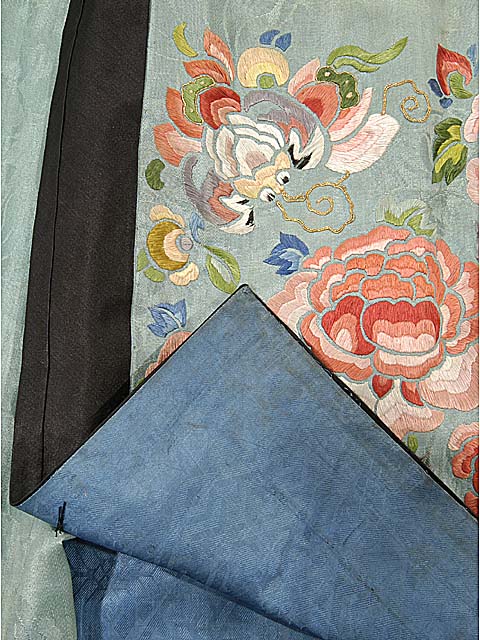


Skirt consisting of pale blue brocaded silk panels, decorated with multicoloured satin stitch embroidery. Each panel is framed with black satin edging. The lining consists of blue brocaded silk textile. The waistband consists of a white and a cream-coloured band of linen material. On one side are 3 knot and loop fastenings. On the opposite side is a single loop with an attached tie. At front and back centre the panels are only held together by basting stitches. The embroidery consists of shades of orange, cream, blue, green and red, with some couched gold-coloured metal-wrappped thread detailing showing flowers, and fruits or bats above an landscape or wave pattern.
Collected by the donor's great grandfather, William Charles Campbell, in China. Campbell was born in Cork, Ireland, in 1861. He joined the consular service as a student interpreter in 1884, having achieved first place in the United Kingdom in a competitive examination which took him to study interpreting Chinese at Birkbeck College London. His travel account of an early journey to Korea is 'an extraordinary account of Korean life'. A trip to Mongolia became a rescue mission for American missionaries in Kalgan when the Boxer Rebellion caught up with them, and in the turbulent events of 1900 he joined Admiral E.H. Seymour in an attempt to relieve the Legations in Peking. His account and books of maps of subsequent journeys on foot through Mongolia and Tibet are mentioned as a 'record of little known countries written by an observant traveller and naturalist' ( Blue Book No. 1. British Parliamentary Publication Sept. 1904). Mr. Campbell married in 1903 to Violet Coutts of Shanghai, and served as a consul in Chengdu and then Peking before retiring to England because of ill health in 1911. He died in London at the age of 65.



